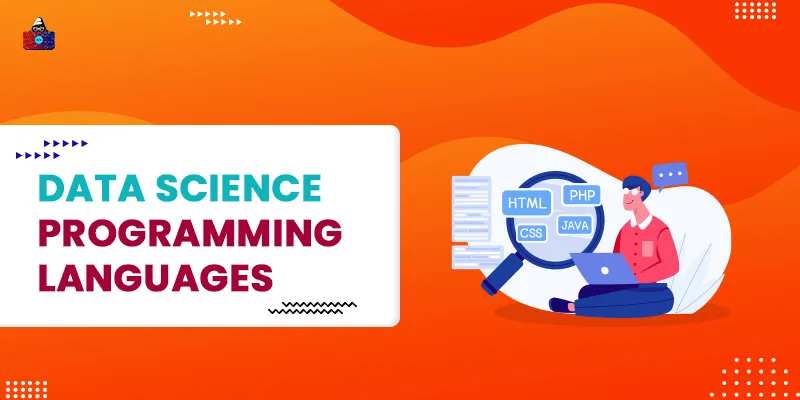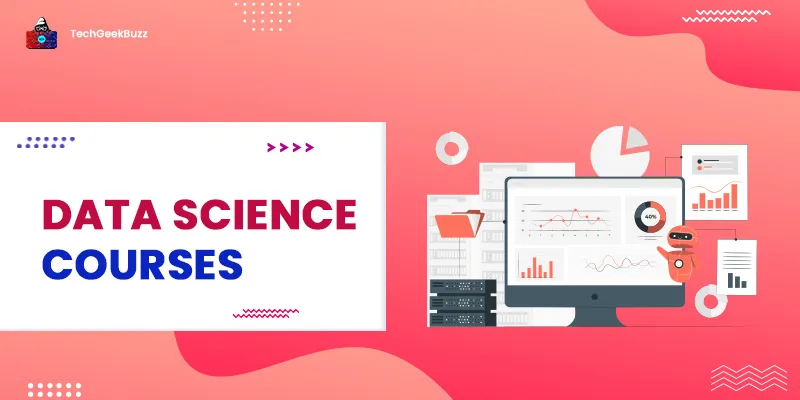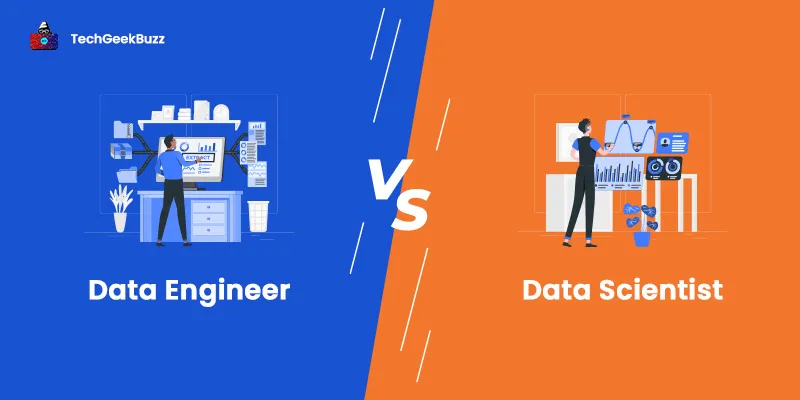Your preparation for data science would be incomplete without knowledge of programming languages. Although there are many tools in the market for dealing with the different phases of data science , none can replace programming languages. Many popular programming languages for data science perform excellent complex calculations, data analysis, and visualizations. Out of these, we have chosen the 7 most popular data science programming languages for 2021. Check out our data science roadmap to understand what you need for learning data science.
Top Programming Languages for Data Science
1. Python
Many believe Python to be the best language for data science. It is easy to code, understand, and is like plain English in its syntax. The programming language for data science has many rich libraries, particularly for data science operations, making it easier for data analysts and data scientists to get insights quickly. The most popular IDEs for Python are Jupyter, PyCharm, and Programiz. We will create a simple addition program here just to show you how easy it is to read and understand Python code:
a = input(‘Type in first number: ‘)
b = input(‘Type in second number: ‘)
sum = float(a) + float(b)
print(sum)
The program takes two user inputs and then converts them into a number (as the method input() returns a string). As simple as that! Note that there is no need to declare any variables, and no end of line semicolons are required. However, indentation is very important in Python, and any mistake with it can lead to compilation errors. Some important features of Python are:
- Developer-friendly and easy-to-read and understand.
- Expressive language with an object-oriented approach.
- Open-source and free to download.
- High-level portable language.
- Dynamically typed.
- Features a rich set of libraries.
- Extensible and interpreted.
Python has been written in C; thus, it supports executing the code in other programming languages, including C, Java, and C#. This ups the flexibility and versatility of the data science programming language. Start learning Python basics .
2. R
A close competitor in features to Python, R is another powerful language for statistical computing and graphics. Used extensively for data mining, analysis, and visualization, R is primarily written in C, Fortran, and R itself. R programs can be easily written and executed on RStudio, the feature-rich IDE, or the command-line interface, as it is an interpreted language. Just like Python, R has a huge, active and supportive community. R supports a very simple syntax. Also, the most basic data type in R is the vector and the operations are very simple. The code to create 2 simple vectors and then adding them are as follows:
v1 <- c(1,2,3,4,5,6) v2 <- c(1,2,3,4,5,6) print(v1+v2)
As you can see from above, the code is simple and quite self-explanatory. Same way, we can easily create a matrixby mentioning the number of rows and columns along with the data:
M1 = matrix( c('a','b','c','d','e','f','g','h','i'), nrow = 3, ncol = 3, byrow = TRUE)
print(M1)
Some important features of R are:
- Effective data handling and storage capabilities.
- Easy calculations on arrays, vectors, lists, and matrices using vector arithmetic.
- A coherent, large, integrated collection of data analysis tools.
- Powerful graphical capabilities.
- Open-source and cross-platform support.
- Distributed computing.
R is very useful for web scraping and can perform multiple complex mathematical operations with a single instruction. The programming language for data science can pull data from multiple sources, like servers and SPSS files. R Markdown is used to generate a variety of reports in different formats. Start learning the basics of R right now.
3. SQL
SQL is essential for different phases of data science . Although there are many NoSQL databases as well, most legacy systems use SQL. This is because SQL offers many features for data cleaning, feature extraction, data transformation, and exploratory data analysis. SQL is very easy to learn and has a simple syntax. You can execute multiple queries and work on large datasets too. It can perform descriptive statistical functions, like count, average, max, min, orderby, and groupby. A simple SQL query to fetch employee details of a particular employee using their name is written as:
select * from employee where employee_name = ‘Sam Curran’;
This will print all the column values of the row with the given employee name. We can also get specific columns using the following code:
select emp_designation, emp_salary from employee where employee_name = ‘Sam Curran’;
Some important features of SQL are:
- Provides high data security.
- High performance and high availability.
- Scalable and flexible.
- Open-source and easy-to-manage.
- Robust transaction management features.
4. SAS
In reality, SAS is a software tool much like other BI tools (Power BI, QlikSense, Datapine, etc.); however, we are covering it under data science programming languages due to its extensive programming approach for data analysis and transformation. SAS is an innovative analytics tool for transforming data into useful insights. Because of the programming approach (as opposed to the drag-and-drop approach), there is finer control and more flexibility in data manipulation. If you are familiar with SQL or any other programming language, you will be able to learn SAS easily. Learning SAS gives you the right balance of programming and software tool knowledge and enables you to use the best of both. Oh, by the way, SAS is Statistical Analysis Software. It works efficiently on large datasets to perform the following tasks:
- Data management and application development.
- Statistical analysis.
- Business planning.
- Data extraction, transformation, and edits.
To deal with the abovementioned tasks, SAS has many components, including Base SAS (core), SAS Graph, SAS Stat, SAS IML, and SAS Insight. There are 3 steps in a SAS program: DATA, PROC, and OUTPUT. This is followed by the RUN statement to execute the steps.
1. DATA step : In this step, the dataset is loaded into the SAS memory, and the columns (variables) of the datasets are identified. Example:
DATA employee;
INPUT EMPID $ EMPNAME $ EMPROLE $;
DATALINES;
0001 Tom HR
0002 Samuel Testing
0003 Ray P. Senior Architect
;
RUN;
2. PROC step : In this step, data is analyzed using built-in procedures. For example:
PROC FREQ data = employee;
tables salary;
by grade;
run;
To get the frequency distribution, we use the in-built method FREQ.
3. OUTPUT step : Displays the data with the options and conditions applied. Example:
PROC PRINT DATA = EMPLOYEE;
WHERE GRADE = 'A';
RUN;
Some important features of SAS include:
- Powerful data analytics capability.
- Support for most of the common data formats.
- SAS Studio for UI.
- Data encryption algorithms.
- Flexible 4GL (4 Generation Programming Language).
Learn SAS basics through this Coursera tutorial .
5. Java
Java has been there for a long time and is one of the most preferred languages for web applications. Because of its robustness, it is also a much-preferred language for data science tasks. Java also has an extensive set of libraries for data cleaning, statistical analysis, text analytics, ML, deep learning, and data visualization. Although Java is less popular than Python and R for data science, it is still a very desirable skill for data scientists. JVM ( Java Virtual Machine ) is considered one of the best platforms for data science tasks as it is cross-platform. Also, Java is scalable and strongly typed, thus making it easier for developers to code faster. Further, many popular big data frameworks like Apache Spark, Hadoop, and Hive are written in Java. Same way, one of the most popular ML tools, RapidMiner, is written in Java. A simple program to add two numbers in Java goes like this:
import java.util.Scanner;
public class Add {
public static void main(String[] args) {
int a, b, sum;
Scanner sc = new Scanner(System.in);
System.out.println("First Number?: ");
a = sc.nextInt();
System.out.println("Second Number: ");
b = sc.nextInt();
sc.close();
sum = a + b;
System.out.println(sum);
}
}
Udemy provides a nice course on Data Science and ML with Java.
6. Scala
Scala is just one step ahead of Java as it has the robustness of Java but with better capabilities. It addresses some of the most common issues in Java. Also, Scala handles big data more efficiently as the code is first compiled by the Scala compiler, and once the byte code is generated, it is transferred to JVM, which generates the output. Scala is statically typed and supports higher-order and nested functions. The most important feature of Scala, which makes it such a good language for data science is lazy evaluation. Suppose we have a variable a which we initialize as lazy as:
a: Int = <lazy>
Until the variable is explicitly accessed to perform an operation, it will not be allotted any memory, thus, saving memory and resources. Scala also supports batch data processing as well as parallel processing. In fact, the Spark framework uses Scala for data analytics and real-time data streaming. A simple Scala program to add 2 numbers looks something like this:
def add( x:Int, y:Int ) : Int = {
var sum:Int = 0
sum = x + y
return sum
}
}
Some features that make Scala an excellent choice for data science are:
- Follows object-oriented and functional programming paradigms.
- Extensible – supports multiple constructs without libraries, APIs, and DSL extensions.
- Statically-typed.
- Supports Spark, which is one of the best big data frameworks.
- Immutability and lazy evaluation.
- Runs on JVM and can execute Java code.
7. MATLAB
MATLAB is a great language for high-performance technical computing. It can perform computation, processing, and visualization in a single, easy-to-use environment, for example, modeling, prototyping, simulation, algorithms, and graphs. MATLAB is short for MATrix LABoratory. You would have probably done some basic MATLAB programs in your university and might know that it features several application-specific solutions known as toolboxes. These toolboxes help solve problems in signal processing, fuzzy logic, control systems, simulation, neural networks, and so on. MATLAB is a huge ecosystem and contains:
- The basic language (control statements, data structures, etc.),
- The working environment (data import-export, debugging, profiling, etc.),
- Graphics handling (data visualization, image processing, etc.),
- Math library (complex arithmetic, matrix eigenvalues, Fourier transforms, etc.), and
- API (for interfacing with other languages like Java, C, and C++).
Some common tasks performed in MATLAB are:
- Linear algebra and algebraic equations.
- Matrices and arrays operations.
- Integration, differential equations, and calculus.
- Transforms and curve fittings.
- 2-D and 3-D graphs visualization.
- Statistics and data analysis.
MATLAB Features
Some important features of MATLAB are:
- Huge and rich set of libraries for linear algebra, filtering, optimization, statistics, etc.
- Can perform complex computations and visualizations with high efficiency.
- Built-in graphics for custom plots.
Let’s try a simple example in MATLAB. As it is an interpreted environment, you can type a command, and it will be immediately executed. For example, 3 + 3 and execute in the MATLAB environment will give you ans = 6. Same way, x = 1; y = 2; z = x/y will give the value of z as 0.5. To create a simple matrix, all we have to do is separate the rows by a semicolon as show below:
m1 = [1 2 3 4; 5 6 7 8; 9 10 11 12]. This will create a 3x4 matrix.
These are uses of MATLAB as a scientific calculator. However, if we want to execute many lines of code, we need scripts and functions. Scripts contain a set of commands that are executed together, whereas functions can accept and return input and output parameters. For example:
x = 1; y = 2; z = x + y p = z + x*y q = p/10 r = z^2
In the above example, the script file (.m extension) will execute all the above code at once. MATLAB is very flexible and adaptive to data science. You can check out this specialization from Coursera to learn more about MATLAB.
Conclusion
Data science is very vast, and programming is just one part of it, but it is an important one! If you know to program, you will automatically try to sort data logically and understand patterns. Programming will help you perform quick checks on data and perform EDA in a well-organized manner. You should try to learn at least 2-3 data science programming languages. Start with Python, if you have no prior programming experience. Most of the time, knowing one among Python and R and one of Java and Scala is sufficient.
People are also reading:





Leave a Comment on this Post